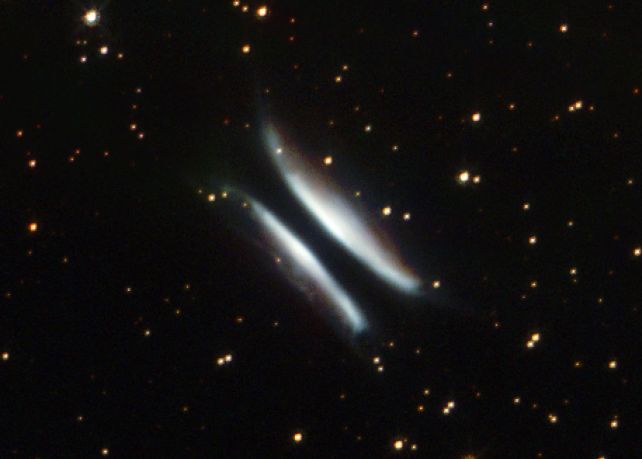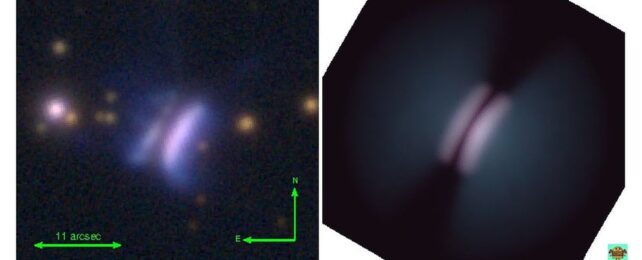Space, it seems, is teeming not with stars and galaxies but with delicious cosmic snacks.
A new object in the Milky Way discovered by a team of astronomers led by Ciprian Berghea of the US Naval Observatory has been given the nickname Dracula's Chivito, after the meat-laden sandwich that is the national dish of Uruguay.
In reality, Dracula's Chivito is a baby star surrounded by a thick disk of dust and gas; viewed edge-on, the arrangement sort of looks like a sandwich, if you squint.
That's not the only reason for the object's odd name. A similar-shaped object spotted in the Milky Way back in 1985 was called Gomez's Hamburger, later identified in 2008 as a baby star some 900 light-years away.
Dracula's Chivito is remarkably similar to Gomez's Hamburger. It's a similar distance away, some 980 light-years or so. And it's similarly oriented, so that the disk of dust and gas cuts through the light of the star like the filling in a sandwich, giving us a very different view of the star formation process compared to those we usually see.
And while the two objects are rare, they could represent a class of newborn stars that we know very little about. That's because neither Dracula's Chivito nor Gomez's Hamburger appear in the typical environment for baby stars known as stellar nurseries, which are rich in materials from which new stars are forged. Rather, both stars seem to be floating in relatively empty space, with few clues as to how they came to be born.
We know a fair bit about the stellar birth process based on a growing number of radio observations. Each starts life as a dense clump in a cloud of molecular gas that collapses under its own gravity, forming the seed of a baby star. As the protostar spins it grows, and material from the cloud around it organizes into a disk that swirls around it, feeding the star's growth.

How Dracula's Chivito and Gomez's Hamburger appear not to be associated with any nearby star-forming region or star cluster is something of a mystery.
Some clues might lie in the similarity of the two objects.
Here's what we know about Dracula's Chivito. Berghea and colleagues determined that the central star is likely a hot, Herbig Ae-type star burning at temperatures of around 8,000 Kelvin (7,727 Celsius or 13,940 Fahrenheit). The disk spans some 1,650 astronomical units in radius (that's 1,650 times the distance from Earth to the Sun), and contains material with a mass of around 0.2 Suns.
This is fairly close to the properties of Gomez's Hamburger, but Dracula's Chivito has something extra: two protruding filaments from the "buns" that the researchers liken to fangs (that's the Dracula part). After modeling stellar formation, the researchers concluded these filaments suggest a dissipating envelope around the star.
This fading bubble of material can help scientists work out exactly how far along the star is in its formation process, since baby stars tend to emit powerful winds and jets that blow away the excess material around them. The presence of the thin envelope suggests that the star is still very young.
The discovery represents a new opportunity to study the vertical structure of the star formation process, but also suggests that, while possibly rare, isolated baby stars may be more common than we thought. There remain, however, many questions about how they came to be where they are, all alone, in the darkness of space.
Finding more of them could help scientists resolve these fascinating questions.
"The serendipitous discovery of Dracula's Chivito," the researchers write, "implies that such edge-on disks not associated with known star-forming regions (Gomez's Hamburger is another case) are still waiting to be discovered."
The research has been submitted to The Astrophysical Journal Letters, and is available on arXiv.
